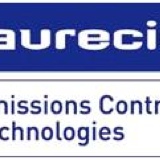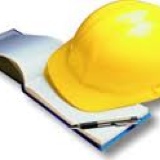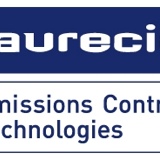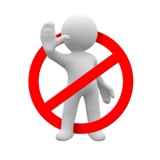Information
-
Client / Site / Project
-
Machine Name
-
Conducted on
-
Prepared by
-
Location
-
Personnel
Machine Summary
Machine Identity
-
Machine Type
-
Machine Model
-
Machine Serial Number
-
Signed CE certificate is available.
-
Machine General View
Final Conclusion
-
Machine is
-
Comments
Assessment done by:
-
HSE
-
Supporting by:
Participant
-
Name / Function
Assessment
Questions related to the FECT Machine Certificate
Mandatory Rule 1: LOTO
-
ALL LOTO isolation points must be centralised (close together)
-
Good working order
-
Situated outside the danger zone
-
Lockable (FECT multi-bar standard)
-
Robustly Labelled (FECT Division colour code)
Mandatory Rule 2: Energy Release and Mechanical Block
-
Gas, Air, Water, Steam: Serviceable, Lockable Valves & Gauges fitted outside the danger zone. Gauges read zero after energy release. Gauges show pressure when energy should be present.
-
Electrical: Analogue or Digital Voltmeters are fitted across each phase. Voltmeters read zero after energy release & show voltage when energy should be present.
-
Hydraulics: Gauges fitted CLEARLY VISIBLE from outside the danger zone. Gauges read zero after switch off/energy release. Gauges show pressure when energy should be present. (Note: Rule applies to ALL gauges fitted on the machine)
-
Gravity: Mechanical blocks provided to safely support loads. (Interlocked to the safety circuit)
-
Stored Energy: Any stored energy like springs under tension / heat identified and robust warning signs applied.
-
ALL LOTO points are identified and a relevant LOTO procedure is displayed on the machine. (FECT Division colour code)
Mandatory Rule 3: Personal Identification
-
PI location point provided
-
PI does not obstruct any buttons or switches
-
PI location point is situated outside of the danger zone
-
PI location point is labelled
Mandatory Rule 4: Safety Guards
-
All open access to dangerous zone and All danger zones/areas are clearly defined (Yellow / Black)
-
Open Horizontal dangerous zones/areas are protected 100% by Laser Scanner and/or Light Curtains (See accompanying notes in MR#5)
-
Open Vertical access to danger zones are protected 100% by Laser Scanner and/or Light Curtains (See accompanying notes in MR#5)
-
Closed access danger zones are protected 100% by 1.8m high perimeter guarding (inc access gates) & access gates are properly interlocked, Interlocks are fail safe (Mesh size is appropriate for the application).
Mandatory Rule 5: Fail Safe
-
One by One, test each safety device in each machine mode for each machine axis and confirm machine will not start and there is no movement of any part of the machine.<br><br>Where there is a risk of unrecoverable accident (like amputation) Evidence must be available to confirm that safety devices and the safely related parts of the control system (SRPCS) meet the highest possible performance level (Note: Light curtains must be type 4 PLe and/or SIL3 according to ISO 13849-1 and/or IEC62061).
Mandatory Rule 6: OK First Part
-
HSE OK first part efficiency is considered during machine design
-
HSE OK first part efficiency work shop has been performed.
-
Each machine has an HSE OK first part check sheet. All safety devices are properly identified on the HSE OK Irish part check sheet.
-
All safety devices are properly identified on the machine. Maintenance only access points are clearly visualised.
-
Operator test each safety device with the machine running (observe movement) and confirms movement stops.<br>(Note: secondary devices must be tested with the machine moving unless it's technically not feasible)
-
Checking stick is available (note: this question is not include in the certificate)
Mandatory Rule 8: Safety harness attached to lifeline
-
Machinery must be designed and constructed in such a way to allow safe access to all areas / levels of the machine . In particular when work on top of machine is foreseeable safe access stairs (with hand rails) guard rails and kick plates must be fitted.
Mandatory Rule 9: Finger Pinch Prevention
-
Confirm pinch point are clearly identified (robust signage) (ISO 7010-W024 and/or RED RAL 3000))
-
Confirm handles and or handling points are coloured green (RAL 6018)
Mandatory Rule 11: Hydraulic Line Burst
-
Confirm no signs of damage or wear to hydraulic hoses.
-
Confirm hydraulic hoses are properly secured with clamps / chains.
-
Confirm hoses are not touching each other or rubbing together.
Mandatory Rule 13: Fire prevention
-
Risk of fire and explosion related to the use of the machine are identified and appropriate prevention / protection measures are implemented. In particular, on welding cells, spark arrestors are fitted on LEV systems and a cleaning program is available (supported by visual evidence i.e. before and after photos)
Cycle Start
-
“It is strictly forbidden for one operator to press cycle start whilst another person is inside the machine". Operator must be able to see the dangerous area and look before starting the machine.<br>Sites must make sure all persons are trained to this rule and show evidence of it.
Control Panel.
-
Confirm control buttons & switches on control panels / electrical cabinets are accessible from outside of the danger zone (must not need to enter the danger zone)
Questions relating to the Group Machine Evaluation Form and PMS Checklist
-
Mandatory Rules 5: Plug and socket fail safe test point fitted outside of the danger zone for each electronic device.
-
Mandatory Rules 5: All safety circuits / devices must be hard wired on not operated through a PLC.
-
Machine meets legal requirements verified by an external 3rd party
Additional questions related to the European Machine Directive 2006/42/EC
Lighting (Section 1.1.4)
-
Machinery must be supplied with integral lighting suitable for the operations concerned where the absence thereof is likely to cause a risk despite ambient lighting of normal intensity. Machinery must be designed and constructed so that there is no area of shadow likely to cause nuisance, that there is no irritating dazzle and that there are no dangerous stroboscopic effects on moving parts due to the lighting. Internal parts requiring frequent inspection and adjustment, and maintenance areas, must be provided with appropriate lighting.
-
Machine conforms to the requirements.
Design of machinery to facilitate its handling (Section 1.1.5)
-
During the transportation of the machinery and/or its component parts, there must be no possibility of sudden movements or of hazards due to instability as long as the machinery and/or its component parts are handled in accordance with the instructions.
-
Machine conforms to the requirements.
Ergonomics (Section 1.1.6)
-
Under the intended conditions of use, the discomfort, fatigue and physical and psychological stress faced by the operator must be reduced to the minimum possible, taking into account ergonomic principles such as:
—allowing for the variability of the operator’s physical dimensions, strength and stamina,
—providing enough space for movements of the parts of the operator’s body,
—avoiding a machine-determined work rate,
—avoiding monitoring that requires lengthy concentration,
—adapting the man/machinery interface to the foreseeable characteristics of the operators -
Machine conforms to the requirements.
Starting (Section 1.2.3)
-
Starting It must be possible to start machinery only by voluntary actuation of a control device provided for the purpose. The same requirement applies:
—when restarting the machinery after a stoppage, whatever the cause,
—when effecting a significant change in the operating conditions.
However, the restarting of the machinery or a change in operating conditions may be effected by voluntary actuation of a device other than the control device provided for the purpose, on condition that this does not lead to a hazardous situation.
For machinery functioning in automatic mode, the starting of the machinery, restarting after a stoppage, or a change in operating conditions may be possible without intervention, provided this does not lead to a hazardous situation.
Where machinery has several starting control devices and the operators can therefore put each other in danger, additional devices must be fitted to rule out such risks.
If safety requires that starting and/or stopping must be performed in a specific sequence, there must be devices which ensure that these operations are performed in the correct order. -
Machine conforms to the requirements
Risks due to falling or ejected objects (Section 1.3.3)
-
Precautions must be taken to prevent risks from falling or ejected objects
-
Machine conforms to the requirement
Risks due to surface, edges or angles (Section 1.3.4)
-
Insofar as their purpose allows, accessible parts of the machinery must have no sharp edges, no sharp angles and no rough surfaces likely to cause injury
-
Machine conforms to the requirements.
Fixed guards (Section 1.4.2.1)
-
Fixed guards must be fixed by systems that can be opened or removed only with tools. Their fixing systems must remain attached to the guards or to the machinery when the guards are removed. Where possible, guards must be incapable of remaining in place without their fixings.
-
Machine conforms to the requirement
Emissions of hazardous materials and substances (Section 1.5.13)
-
Machinery must be designed and constructed in such a way that risks of inhalation, ingestion, contact with the skin, eyes and mucous membranes and penetration through the skin of hazardous materials and substances which it produces can be avoided.
Where a hazard cannot be eliminated, the machinery must be so equipped that hazardous materials and substances can be contained, evacuated, precipitated by water spraying, filtered or treated by another equally effective method. Where the process is not totally enclosed during normal operation of the machinery, the devices for containment and/or evacuation must be situated in such a way as to have the maximum effect. -
Machine conforms to the requirement
Risk of being trapped in a machine (Section 1.5.14)
-
Machinery must be designed, constructed or fitted with a means of preventing a person from being enclosed within it or, if that is impossible, with a means of summoning help
-
Machine conforms to the requirements
Risk of slipping, tripping or falling (Section 1.5.15)
-
Parts of the machinery where persons are liable to move about or stand must be designed and constructed in such a way as to prevent persons slipping, tripping or falling on or off these parts. Where appropriate, these parts must be fitted with handholds that are fixed relative to the users and that enable them to maintain their stability
-
Machine conforms to the requirements
Machinery maintenance (Section 1.6.1)
-
Adjustment and maintenance points must be located outside danger zones. It must be possible to carry out adjustment, maintenance, repair, cleaning and servicing operations while machinery is at a standstill
-
Machine conforms to the requirement
Access to operating positions and servicing points (Section 1.6.2)
-
Machinery must be designed and constructed in such a way as to allow access in safety to all areas where intervention is necessary during operation, adjustment and maintenance of the machinery.
-
Machine conforms to the requirement
Information and information devices (Section 1.7.1.1)
-
The information needed to control machinery must be provided in a form that is unambiguous and easily understood. It must not be excessive to the extent of overloading the operator.
Visual display units or any other interactive means of communication between the operator and the machine must be easily understood and easy to use. -
Machine conforms to the requirement
Warning of Residual risks (Section 1.7.2)
-
Where risks remain despite the inherent safe design measures, safeguarding and complementary protective measures adopted, the necessary warnings, including warning devices, must be provided.
-
Machine conforms to the requirement
Marking of the Machinery (Section 1.7.3)
-
All machinery must be marked visibly, legibly and indelibly with the following minimum particulars:
—the business name and full address of the manufacturer and, where applicable, the manufacturer’s authorised representative,
—designation of the machinery,
—the CE Marking,
—designation of series or type,
—serial number, if any,
—the year of construction, that is the year in which the manufacturing process is completed -
Machine conforms to the requirement
Instructions (Section 1.7.4)
-
All machinery must be accompanied by instructions in the official Community language or languages of the EEA state in which it is placed on the market and/or put into service. The instructions accompanying the machinery must be either “Original instructions” or a “Translation of the original instructions”, in which case the translation must be accompanied by the original instructions
-
Machine conforms to the requirement
Safety Devices Check
-
Emergency stop implemented
-
Emergency stop
E-Stop
-
Photo
-
Is clearly identifiable, clearly visible and quickly accessible control devices,
-
Stop the hazardous process as quickly as possible, without creating additional risks,
-
Once active operation of the emergency stop device has ceased following a stop command, that command must be sustained by engagement of the emergency stop device until that engagement is specifically overridden
-
Disengaging the device must not restart the machinery but only permit restarting. <br>
-
The emergency stop function must be available and operational at all times, regardless of the operating mode.
-
Interlocking movable guards or door implemented
-
Interlocking Device
Interlocking Device
-
Photo
-
Identification / Characteristic
-
Prevents the start of hazardous machinery functions until they are closed
-
Gives a stop command whenever they are no longer closed
-
The absence or failure of one of their components prevents starting or stops the hazardous machinery functions
-
It is possible for an operator to reach the danger zone before the risk due to the hazardous machinery function has ceased
-
Movable guards is associated with a guard locking device in addition to an interlocking device that:<br>—prevents the start of hazardous machinery functions until the guard is closed and locked, and<br>—keeps the guard closed and locked until the risk of injury from the hazardous machinery functions has ceased
-
Light Curtain and/or Laser Scanner implemented
-
Light Curtain / Laser Scanner
Light Curtain
-
Photo
-
Identification / Charactristic
-
Moving parts cannot start up while they are within the operator’s reach
-
Persons cannot reach moving parts while the parts are moving
-
Disengaging the device must not restart the machinery but only permit restarting.
-
The absence or failure of one of their components prevents starting or stops the moving parts
-
Light Curtain and Laser Scanner are physically protected.
-
Other safety device implemented.
-
Safety Device
Safety Device
-
Photo
-
Identification / Characteristic
-
Moving parts cannot start up while they are within the operator’s reach
-
Persons cannot reach moving parts while the parts are moving
-
Stop the hazardous process as quickly as possible, without creating additional risks
-
Disengaging the device must not restart the machinery but only permit restarting.
-
The absence or failure of one of their components prevents starting or stops the moving parts
Definition and Standards
Definitions - European Machine Directive 2006/42/EC - Annex I - Section 1.1.1
-
(a) “hazard” means a potential source of injury or damage to health;
(b) “danger zone” means any zone within and/or around machinery in which persons are subject to a risk to their health or safety;
(c) “exposed person” means any person wholly or partially in a danger zone;
(d) “operator” means the person or persons installing, operating, adjusting, maintaining, cleaning, repairing or moving machinery;
(e) “risk” means a combination of the probability and the degree of an injury or damage to health that can arise in a hazardous situation;
(f) “guard” means a part of the machinery used specifically to provide protection by means of a physical barrier;
(g) “protective device” means a device (other than a guard) which reduces the risk, either alone or in conjunction with a guard;
(h) “intended use” means the use of machinery in accordance with the information provided in the instructions for use;
(i) “reasonably foreseeable misuse” means the use of machinery in a way not intended in the instructions for use, but which may result from readily predictable human behaviour











